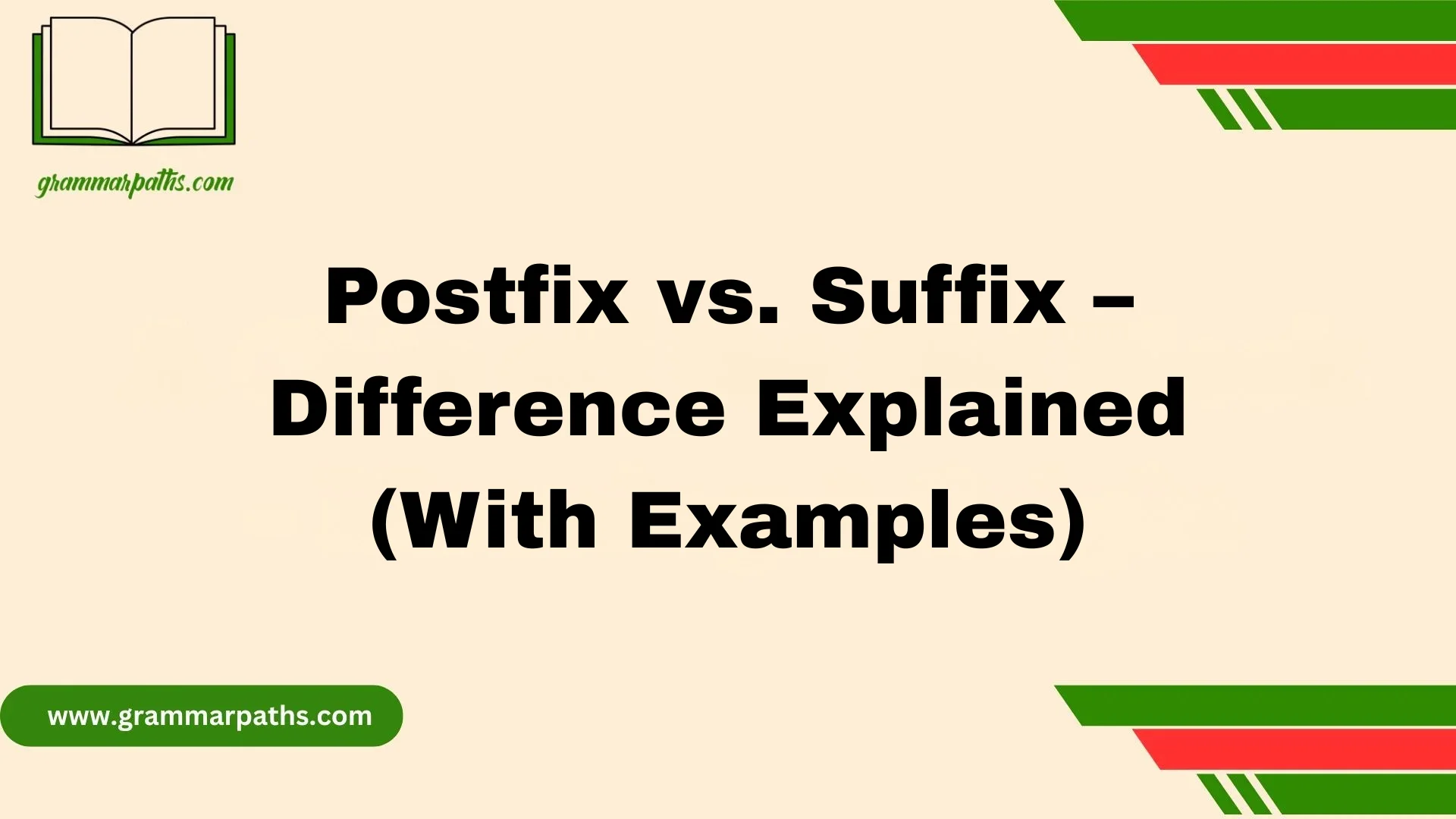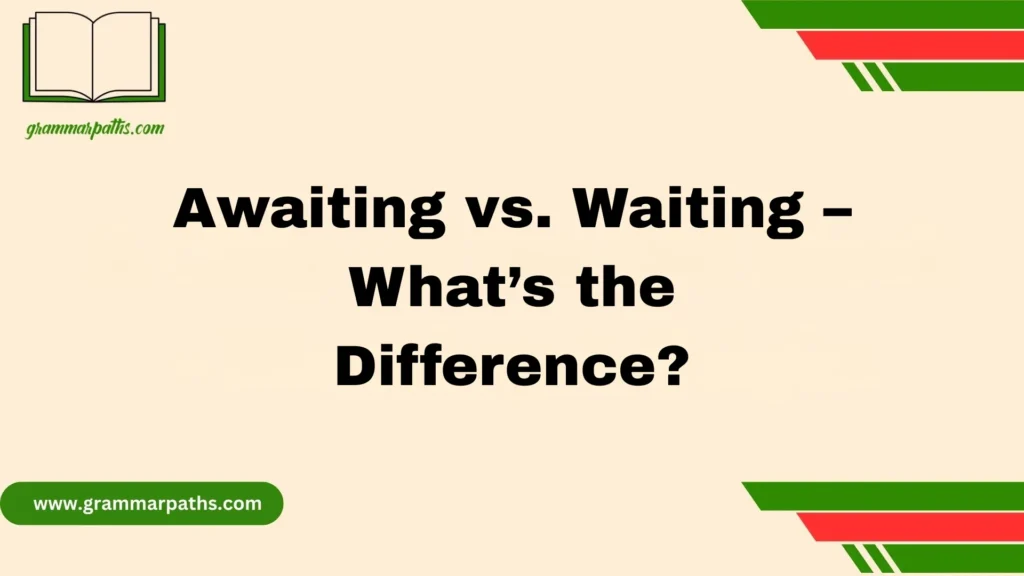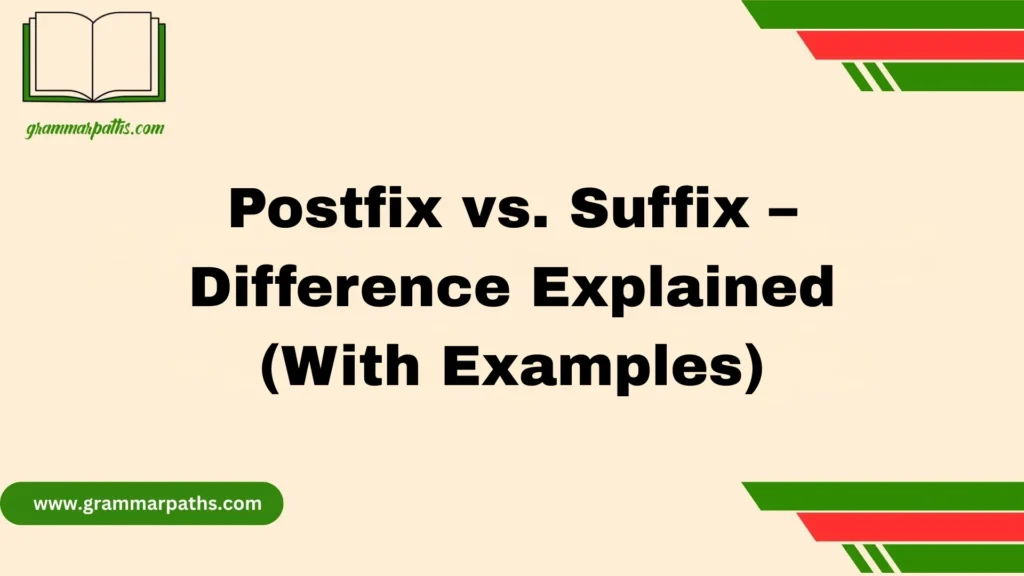When discussing Postfix vs. Suffix, the rules of structure in words and affixes matter. A suffix in grammar can change a verb’s tense or meaning, helping beginners gain learning clarity through correct usage.
In contrast, postfix notation places operators after operands, shaping computing tasks. Found in calculators, expressions, or programming, it ensures efficiency, respects syntax, structures data, and preserves accuracy.
The confusion between these terms is common for developers and students. Clear comparisons, good examples, and technical yet practical guides support better understanding and prevent misuse.
Breaking Down the Words
Let’s start with the roots. Both words end with “-fix”, which comes from the Latin figere, meaning “to fasten” or “to attach.” That’s why you see it in words like affix, prefix, and suffix.
The prefixes set them apart:
- Post- means “after” or “behind.”
- Sub- (in “suffix”) means “under” or “after.”
So, both suggest “attachment after,” but context changes their meaning.
Quick takeaway:
- A suffix attaches to words in linguistics.
- A postfix attaches in notation, coding, or symbolic logic.
What Is a Postfix?
At its simplest, a postfix means something added after. But this term shows up in specific disciplines:
In Computing and Programming
Postfix often refers to postfix notation, also known as Reverse Polish Notation (RPN). Instead of writing equations in the standard way (called infix notation), postfix places operators after operands.
Example:
- Infix: 3 + 4
- Postfix: 3 4 +
Postfix notation is heavily used in computer science, calculators, and stack-based operations because it eliminates the need for parentheses.
Case study – Hewlett-Packard calculators:
HP introduced calculators in the 1970s that used RPN. Engineers loved them because they allowed faster and less error-prone calculations compared to traditional methods.
In Linguistics (Rare)
Some linguists use “postfix” to describe certain affixes that function like suffixes but with subtle grammatical rules. However, suffix remains the dominant term in language.
Visual Representation
| Position | Example Word | Term Used |
| Before root word | Unhappy | Prefix |
| Inside root word | Fanbloodytastic | Infix |
| After root word | Teachers | Suffix |
| After operands (math/coding) | 3 4 + | Postfix |
What Is a Suffix?
While postfix shines in computing, the word suffix dominates in everyday speech and linguistics.
Definition
A suffix is a set of letters added at the end of a root word to change its meaning or grammatical function.
Functions of Suffixes
- Forming plurals: book → books
- Changing tense: walk → walked
- Shifting parts of speech: beauty → beautiful
- Creating degrees: kind → kindness
Examples
| Root Word | Suffix | New Word |
| Nation | -al | National |
| Teach | -er | Teacher |
| Read | -ing | Reading |
| Help | -ful | Helpful |
Suffixes make language flexible and expressive. Without them, English would lose much of its richness
Postfix vs. Suffix: The Key Differences
Let’s compare the two terms head-to-head.
| Aspect | Postfix | Suffix |
| Field of use | Computing, mathematics, logic | Linguistics, grammar |
| Definition | Operator or element that comes after operands or variables | Letters or morphemes added to the end of a word |
| Example | 3 4 + (postfix expression) | Nation → National |
| Common usage | Rare, technical | Very common, everyday language |
| Purpose | Simplifies computation, removes ambiguity in equations | Creates new words, alters meaning, adjusts grammar |
In short:
- If you’re reading a grammar book, you’ll see suffix.
- If you’re reading about coding or math, you’ll see postfix.
Common Misconceptions
Confusion arises because both words imply “attachment after.” Let’s clear that up:
- Misconception 1: Postfix and suffix mean the same thing.
- Reality: They serve different fields—technical vs. linguistic.
- Misconception 2: Postfix is just a fancy term for suffix.
- Reality: Programmers and mathematicians use “postfix” deliberately because it describes notation, not grammar.
- Misconception 3: A word can have a postfix.
- Reality: In English grammar, we call them suffixes, not postfixes.
Usage Frequency and Real-World Data
If we look at written language, suffix dominates by a wide margin. A quick analysis using Google Ngram Viewer shows “suffix” has been consistently used far more often than “postfix” over the last 200 years.
Insights:
- Suffix appears frequently in linguistics, grammar books, and language teaching.
- Postfix spikes in computer science and mathematical texts, especially after the 1950s when computing grew.
This pattern shows how specialized “postfix” is compared to the general utility of “suffix.”
Practical Examples Side by Side
To cement the difference, let’s compare both with examples.
Suffix in Linguistics
- Teacher → “-er” creates a noun.
- National → “-al” turns it into an adjective.
- Happiness → “-ness” forms an abstract noun.
Postfix in Computing
- Expression: 2 3 + = 5
- Expression: 5 1 2 + 4 * + 3 – = 14
- Code snippet (stack operations):
- Push numbers onto the stack.
- Apply operator.
- Pop result back onto stack.
This side-by-side view highlights their very different contexts.
Why This Difference Matters
You might wonder: does it really matter which term we use? Absolutely.
- In education: Students mixing the two terms may get confused, especially those learning both grammar and programming.
- In technical fields: Using “suffix” instead of “postfix” in documentation can lead to errors or misunderstandings in software development.
- In communication: Precision in language builds credibility, whether you’re a teacher, student, or professional.
Think of it this way: calling a suffix a postfix in grammar is like calling a dog a wolf. Related? Yes. Interchangeable? Not at all.
Conclusion
The debate around Postfix vs. Suffix shows how one pair of similar-sounding terms can carry two very different meanings in separate fields. In linguistics, a suffix changes a word’s tense or meaning by adding letters at the end. In computing, postfix describes a notation system where operators follow operands, often used in programming, syntax, and calculators for accuracy and efficiency. Knowing the difference prevents confusion, supports beginners, and strengthens both students and developers in their learning journeys. By using comparisons, examples, and a structured guide, learners can build true understanding and maintain both clarity and practical skill.
FAQs
Q1: What is the main difference between a suffix and postfix?
A suffix in grammar modifies a word by changing its form or meaning, while a postfix in computing is a notation placing operators after operands.
Q2: Why do beginners confuse postfix and suffix?
Because both involve something at the end, beginners often link them, but their contexts—linguistics vs. computing—are very different.
Q3: Can you give an example of a suffix?
Yes. In English, “talk” becomes “talked” with the suffix “-ed,” showing a past tense change in form.
Q4: Can you give an example of postfix notation?
Sure. Instead of “2 + 3,” in postfix it’s written “2 3 +,” which makes expressions easier for programming and calculators.
Q5: How can learners avoid misunderstandings?
By studying rules, using data, reviewing examples, and following a structured guide with clear technical and practical explanations.

Mia Rose is the passionate writer and founder of GrammarPaths.com, a resource dedicated to helping learners master English grammar, idioms, and writing skills with ease. With a deep love for language and years of experience in teaching and content creation, Mia simplifies complex grammar rules into clear, practical guides that readers can instantly apply.










